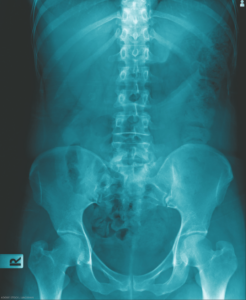 BALTIMORE—In 2009, the Assessment of SpondyloArthritis International Society (ASAS) developed classification criteria that coined the terms axial spondyloarthritis (axSpA) and non-radiographic axSpA.1 Since then, clinicians and researchers have worked hard to understand these entities and apply this knowledge to accurately diagnose and treat patients with these conditions.
BALTIMORE—In 2009, the Assessment of SpondyloArthritis International Society (ASAS) developed classification criteria that coined the terms axial spondyloarthritis (axSpA) and non-radiographic axSpA.1 Since then, clinicians and researchers have worked hard to understand these entities and apply this knowledge to accurately diagnose and treat patients with these conditions.
At the 19th Annual Johns Hopkins Advances in the Diagnosis and Treatment of the Rheumatic Diseases Symposium, a session titled Updates in Ankylosing Spondylitis and Non-Radiographic Axial Spondyloarthritis provided a masterful discourse on this complex, thought-provoking topic.
Overview
Atul Deodhar, MD, professor of medicine, Oregon Health & Science University, Portland, began with a helpful summary related to disease manifestations and epidemiology. He explained that axSpA is a chronic, systemic inflammatory disease of the axial skeleton with onset in early adulthood. It can have severe and highly variable disease burden, with significant impacts on quality of life. In addition to inflammatory back pain, patients may experience peripheral inflammatory arthritis, dactylitis, enthesitis, uveitis and other ocular manifestations, psoriasis, inflammatory bowel disease, urethritis and even psychologic symptoms, such as anxiety and depression.
The population prevalence of ankylosing spondylitis varies across the globe, ranging from 0.006–0.54%. Within the U.S., the prevalence of axSpA is between 0.9 and 1.4%.2
Dr. Deodhar used the visual graphic of a tree to illustrate why axSpA is so multifaceted. In the roots of the tree are genetic factors, such as the HLA-B27 allele and the ERAP1 gene, which may predispose patients to a higher risk of axSpA but may exist without clinical manifestations of the disease. In the lower trunk of the tree is back pain in general, which may branch into different etiologies, including mechanical back pain, inflammatory back pain and pain from other causes, such as tumors, infections and fractures. The symptom of inflammatory back pain may then branch off into a clinical course with spontaneous remission or a chronic course.
Further down the branch is non-radiographic axSpA, which may also follow a path of spontaneous remission vs. chronic symptoms. Even further down the branch is ankylosing spondylitis, which, in some cases, may involve only the sacroiliac joints. Finally, at the tip of the branch, there is advanced ankylosing spondylitis, with syndesmophytes and other findings of progressive disease.
Diagnosis
The diagnosis of axSpA is challenging. First, diagnosis requires astute pattern recognition, clinical reasoning and the exclusion of other entities that may closely mimic the symptoms of axSpA.


